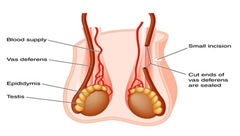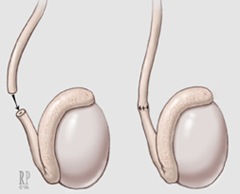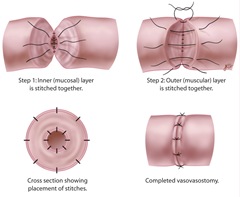Making Informed Decisions: Fertility Preservation Before Vasectomy
Undergoing a vasectomy is a significant decision for many men and their partners. While it is an effective form of permanent contraception, some individuals may want to preserve their fertility options for the future. In this article we will explore various fertility preservation options available before undergoing a vasectomy and what you need to know about each method.

The Importance of Fertility Preservation
Fertility preservation is a proactive step that allows men to safeguard their ability to have biological children in the future. Whether due to changing life circumstances, uncertainty about family planning, or simply wanting to keep options open, preserving sperm before a vasectomy can provide peace of mind.
Sperm Banking: The Gold Standard
What is Sperm Banking?
Sperm banking, also known as sperm cryopreservation, is the most common and reliable method of fertility preservation. It involves collecting and freezing sperm for future use.
- Collection Process: Sperm is typically collected through masturbation in a clinical setting. The sample is then analyzed, processed, and frozen using specialized techniques.
- Long-Term Storage: Frozen sperm can be stored for many years without significant deterioration in quality. This makes sperm banking a viable long-term option.
- Future Use: When ready to conceive, the frozen sperm can be thawed and used in assisted reproductive technologies (ART) such as intrauterine insemination (IUI) or in vitro fertilization (IVF).
Testicular Sperm Extraction (TESE)
What is TESE?
Testicular Sperm Extraction (TESE) is a procedure that involves extracting sperm directly from the testicles. This method is typically used when there are issues with sperm quality or ejaculation.
- Procedure: TESE is performed under local or general anesthesia. A small incision is made in the testicle, and tissue samples are taken. Sperm is then extracted from these samples.
- Use in ART: The extracted sperm can be used immediately or frozen for future use in ART procedures such as IVF or intracytoplasmic sperm injection (ICSI).
- Considerations: TESE is more invasive than sperm banking and is usually reserved for cases where sperm cannot be obtained through traditional methods.
Epididymal Sperm Aspiration (PESA)
What is PESA?
Percutaneous Epididymal Sperm Aspiration (PESA) is another method of extracting sperm, but it is less invasive than TESE. This procedure involves aspirating sperm directly from the epididymis, where sperm is stored after leaving the testicles.
- Procedure: PESA is performed under local anesthesia. A fine needle is used to aspirate sperm from the epididymis.
- Use in ART: Like TESE, the sperm obtained from PESA can be used in ART procedures, including IVF and ICSI.
- Considerations: PESA is less invasive and often less painful than TESE, making it a preferable option for some patients.
Combining Methods for Optimal Preservation
In some cases, combining multiple methods of sperm retrieval and preservation can provide a higher chance of successful fertility preservation. Discussing these options with a fertility specialist can help determine the best approach based on individual circumstances and health conditions.
The Role of Counseling and Support
Deciding to undergo a vasectomy and considering fertility preservation can be emotionally challenging. Counseling and support from healthcare professionals, as well as open communication with your partner, can help navigate these decisions.
Fertility Preservation Before Vasectomy: Conclusion
Fertility preservation before vasectomy is a valuable step for men who want to keep their options open for future family planning. By understanding the available methods, such as sperm banking, TESE, and PESA, individuals can make informed decisions that align with their goals and circumstances.
For expert guidance on fertility preservation and to explore your options before undergoing a vasectomy, contact:
Yaniv Larish, MD
4 East 76th Street
New York, NY 10021
(646) 862-5500
Dr. Yaniv Larish is dedicated to providing personalized care and support to help you achieve your family planning goals. Schedule a consultation today to learn more about fertility preservation and the steps to secure your future fertility.



